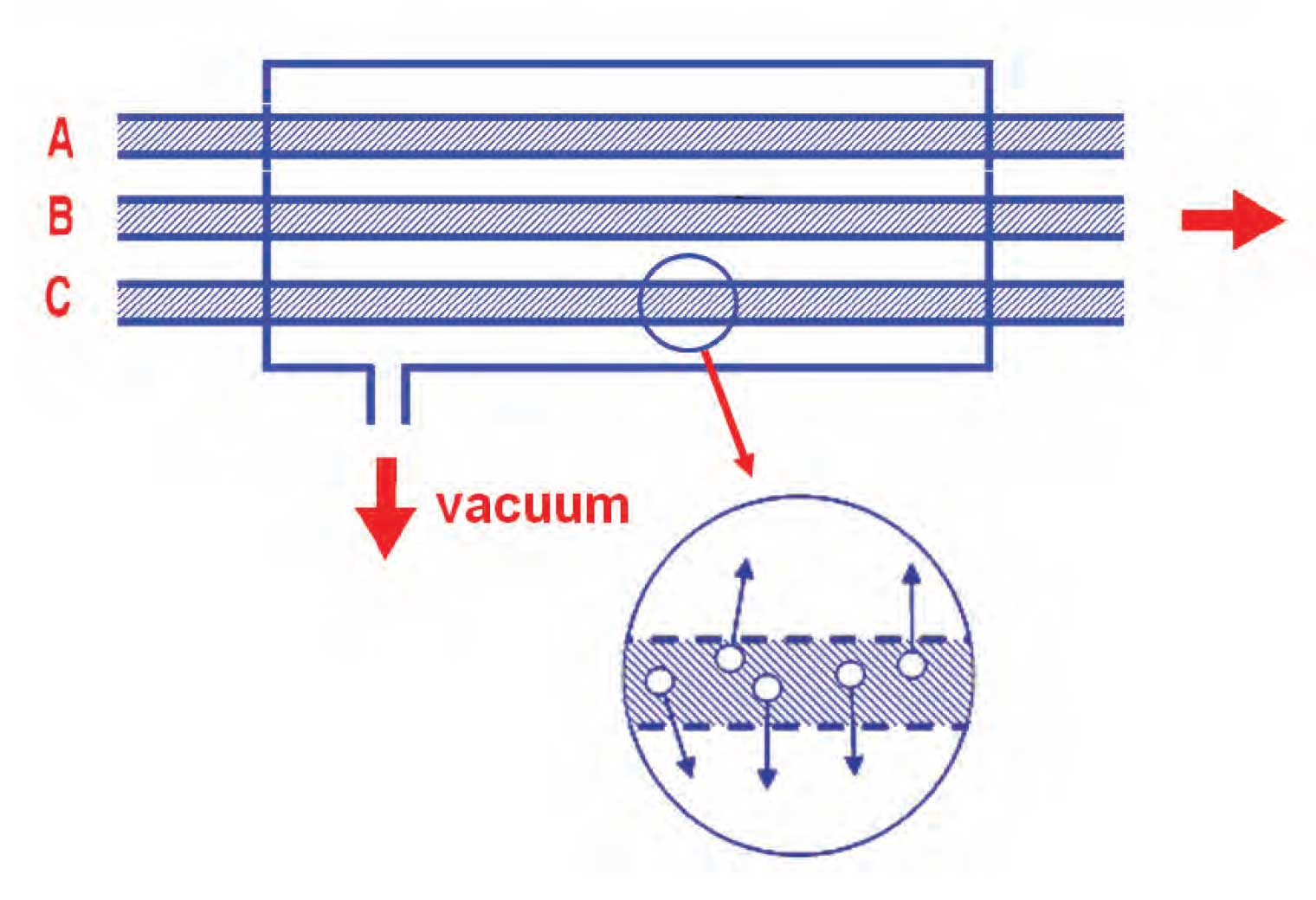For the first part of my HPLC troubleshooting career, it was very easy to name the number one HPLC problem – degassing. Air bubbles in the pump were a headache for nearly every user. Helium sparging was the gold standard in degassing, but was inconvenient and expensive – and without proper venting, could put unwanted solvent vapors in the laboratory air. Vacuum degassing worked fairly well and when combined with sonication, was effective for most applications. But degassing was always a bother and even with good lab habits, bubble problems were still number one on the problem list. Then came the in-line vacuum degasser. This changed everything and most new HPLC systems come with an in-line degasser. Their effectiveness is reflected in my observation that I hardly ever hear a complaint about air bubbles in the pump anymore. Let’s take a moment and see how these devices work.
I’ve drawn a conceptual diagram in Figure 1, illustrating the basis of the in-line degassers. Each solvent travels through a piece of porous tubing inside a vacuum chamber (in practice, each tube is in an isolated section). You can think of the tubing as much like the Gore-Tex of your raincoat. It has micropores which allow gas to pass through, but not liquid. In the case of the degasser, the dissolved air from each solvent is drawn through the tubing by the surrounding vacuum, and then to waste. The liquid continues through the degassing tubing to the pump. As you can imagine, the porosity of the tubing plays a critical role in the effectiveness of the degasser. Over the years, different polymer materials have been used with different levels of success. Today’s degassers usually use a thin membrane over which the solvent passes, and the high gas permeability of this membrane makes degassing very efficient.
 Figure 1
Figure 1
Because the in-line degassers add volume between the reservoir and the pump, it is important to ensure that the entire liquid system is thoroughly flushed before shutting down the HPLC system or when converting from one solvent to another. This is of little concern with the newest degassers, which add
Although the in-line degassers are automatic and usually trouble-free, follow the manufacturer’s recommendations for routine maintenance and be careful not to allow buffers to remain in a non-operating system. Microbial growth in the buffer could result in blockage of the pores in the membranes as well as contamination of the remainder of the HPLC system. If in doubt, leave the degassing channels primed with an organic solvent, such as methanol or acetonitrile. Next week we’ll look at one symptom that can appear when a degasser fails.
This blog article series is produced in collaboration with John Dolan, best known as one of the world’s foremost HPLC troubleshooting authorities. He is also known for his research with Lloyd Snyder, which resulted in more than 100 technical publications and three books. If you have any questions about this article send them to TechTips@sepscience.com




